Table of Contents
- Policy Template Bundle
- What is a Logistics Policy
- Yellowcake Anyone?
- 9+ Logistics Policy Templates in PDF | MS Word
- 1. Logistics Policy Template
- 2. Development of Logistics Policy
- 3. Logistics & Mobility Policy
- 4. Transport Logistics Policy
- 5. Shipping & Logistics Policy
- 6. National Logistics Policy
- 7. City Logistics Policy
- 8. Logistics & Retail Policy
- 9. Logistics Insurance Policy
- 10. Urban Transport Logistics Policy
- 5 Steps How to Create a Logistics Policy
9+ Logistics Policy Templates in PDF | MS Word
States people are keen on making public policies to set rules for everybody to follow. Laws are the best example of policies, and they govern the jurisdiction, from acceptable forms of behavior to countermeasures against unacceptable lapses. The same is also for business. Every institution or organization needs to have a binding force, even the logistics sector. It is either a private firm drafting a logistics management policy or state affair passing a national logistic policy. And a complicated task such as logistics needs clear cut terms to execute its process.

Policy Template Bundle
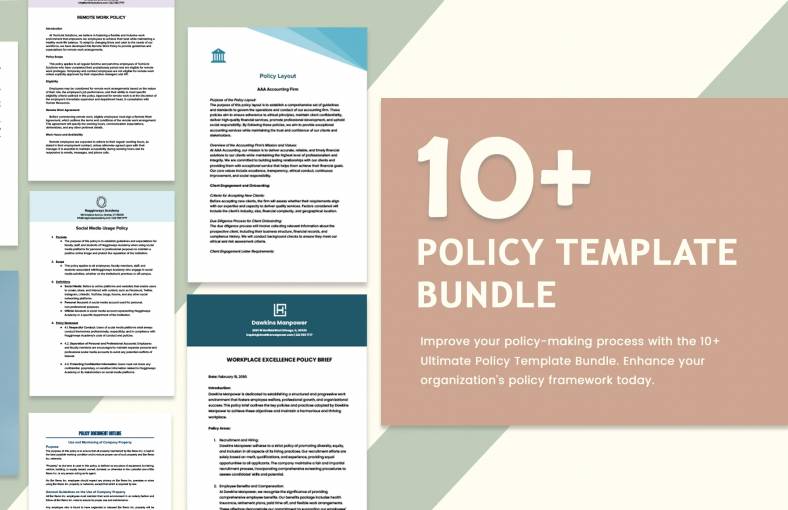
What is a Logistics Policy
A logistics policy is a mandate that determines how the processes are going to proceed. It could be about transportation, customs, infrastructure development, and trade. The provisions could either a new strategy created by administrators or a response to bottlenecks in the industry.
Yellowcake Anyone?
Transporting goods seem very easy as all it takes are some vehicles and the products. Although you are going to combat weather patterns and possible technical difficulties along the way, the most intriguing logistical problem is always about concerns in policies. Vital products such as oil pass through a lot of logistical processes and even problems. The supply chain and national borders add to the logistical issues as negotiations are always up and running. Thus, policies from extraction, storing, and transportation remain at the hotbed as changes in economic landscapes inevitably occur. Yet, the system still flows through existing procedures.
How do you define large quantities? Oil shipments and precious industrial metals come in big tankers. How about a little amount of rock that got the eyes of superpowers? Yellowcake! No, this thing is not your dessert served with your coffee. You have nuclear-powered countries looking at it. And you have top class and high-security clearance level of routes if you transport a little lump. This material carries the ingredient for a nuclear arsenal, and the logistics behind it are so complex that policies have to be stern. Mining for it needs to have clearance from a country like Niger.
Finding one needs declaring it to an International Atomic Energy board. When it becomes for sale and later on removed, concerned parties need to have clearance from extraction to transport. Policies are in effect to guide the delicate process. And a single misstep can lead to voiding the transactions and later on deem as a breach. Even so, giving it to another buyer spells danger. It is here you can see how crucial logistics policies are, especially when dealing with a dessert that big boys eat while those at the receiving end of an ICBM do not.
9+ Logistics Policy Templates in PDF | MS Word
1. Logistics Policy Template
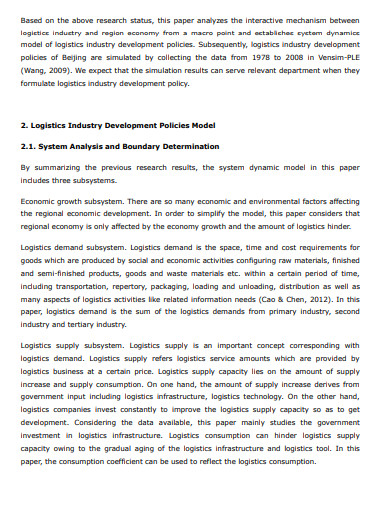 jiem.org
jiem.org2. Development of Logistics Policy
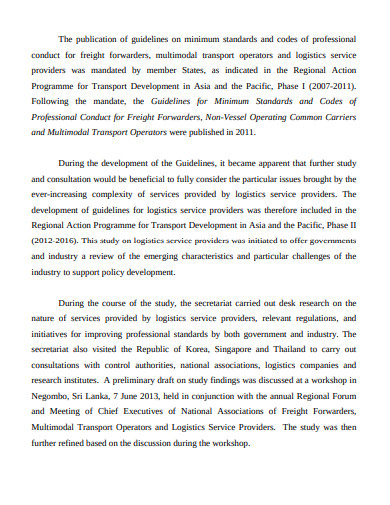 unescap.org
unescap.org3. Logistics & Mobility Policy
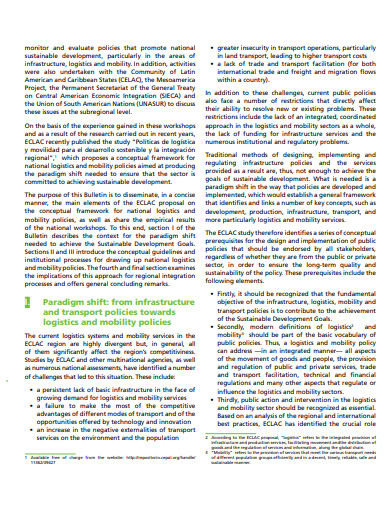 repositorio.cepal.org
repositorio.cepal.org4. Transport Logistics Policy
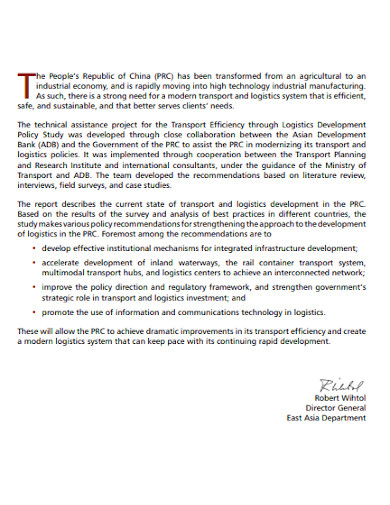 adb.org
adb.org5. Shipping & Logistics Policy
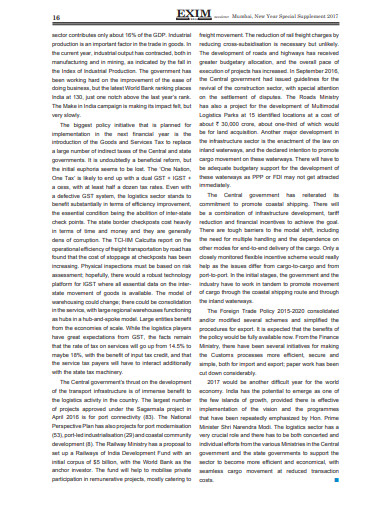 eximin.net
eximin.net6. National Logistics Policy
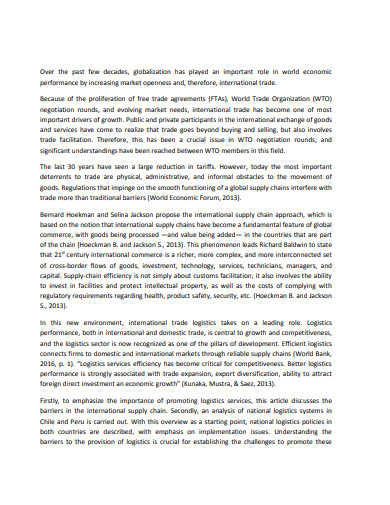 wti.org
wti.org7. City Logistics Policy
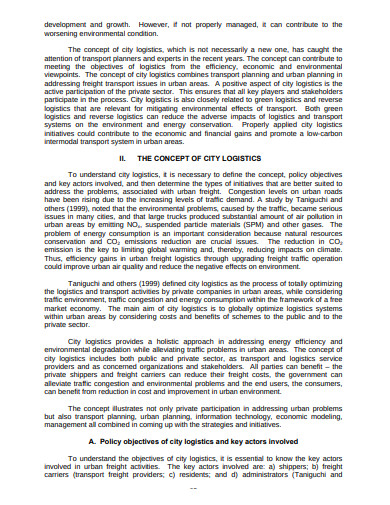 semanticscholar.org
semanticscholar.org8. Logistics & Retail Policy
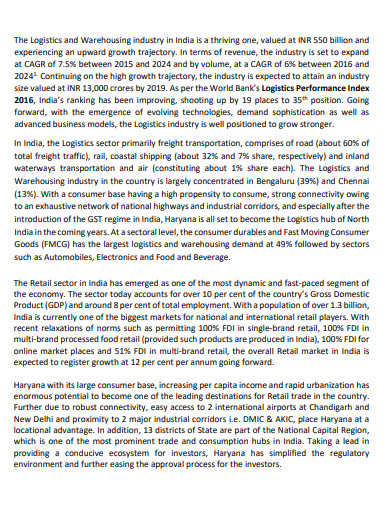 net.in
net.in9. Logistics Insurance Policy
 zurich.com
zurich.com10. Urban Transport Logistics Policy
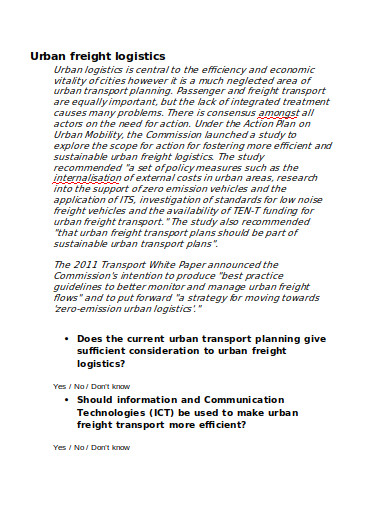 horus.be
horus.be5 Steps How to Create a Logistics Policy
A system cannot stand without policies because the whole process depends on each defined term. Maintaining order or creating a new one is always the goal of policymaking. With so many simple policy templates online, creating or editing one is the next crucial step for the logistics industry. Thus, follow the simple list below to start making your document.
Step 1: Set Objectives
Propositions have roots, and since you are making a logistics policy, go back to the company’s objectives. If the company wants to change a new direction, then make sure the objectives are clear. Every statement in the policy must go along with goals. Plus, know the sector also because warehousing or freight services might have peculiarities that you need to consider.
Step 2: Gather Facts
Creating effective policies has to have firm grounds. You cannot draft provisions out from the blue. Thus, it is useful to consult your analytics team with their analysis documents. If your bosses want you to craft something to address particular woes, then you need figures and data so that you can establish measures.
Step 3: Create Provisions
The heart of the policy are its provisions. Do go back to the company’s directives, or your boss’s instructions. Or you can resort to the facts that you gathered. Do take note that the statements you are going to make will define the system later on. Thus, add care and meticulousness as you make the policies. Moreover, the internet has a lot of policy templates that can guide you with the process.
Step 4: Articulate with Clarity
Clarity of language is a demand in every quality policy to avoid confusion, settle problems, and set the direction. Avoid the ambiguity and go straight to the point with your provisions. You do want to maintain the coordination of the players in the supply chain, so say the words well to set the process on the go.
Step 5: Review
Before putting the policy to effectivity, take the time to review the document. It could be a privacy policy, so you’d better get down to the details. Make sure that everything is spotless before releasing it. The whole system is dependent on the provisions; thus, extra effort has to be in place to clear things out.
Policies reflect a need that all concerned parties must address. And dealing with the logistics of everyday commodities to critically rare ones need governing rules. Thus, we can say that it is a well-played game when following the rules is a trope while accomplishing the objectives.

